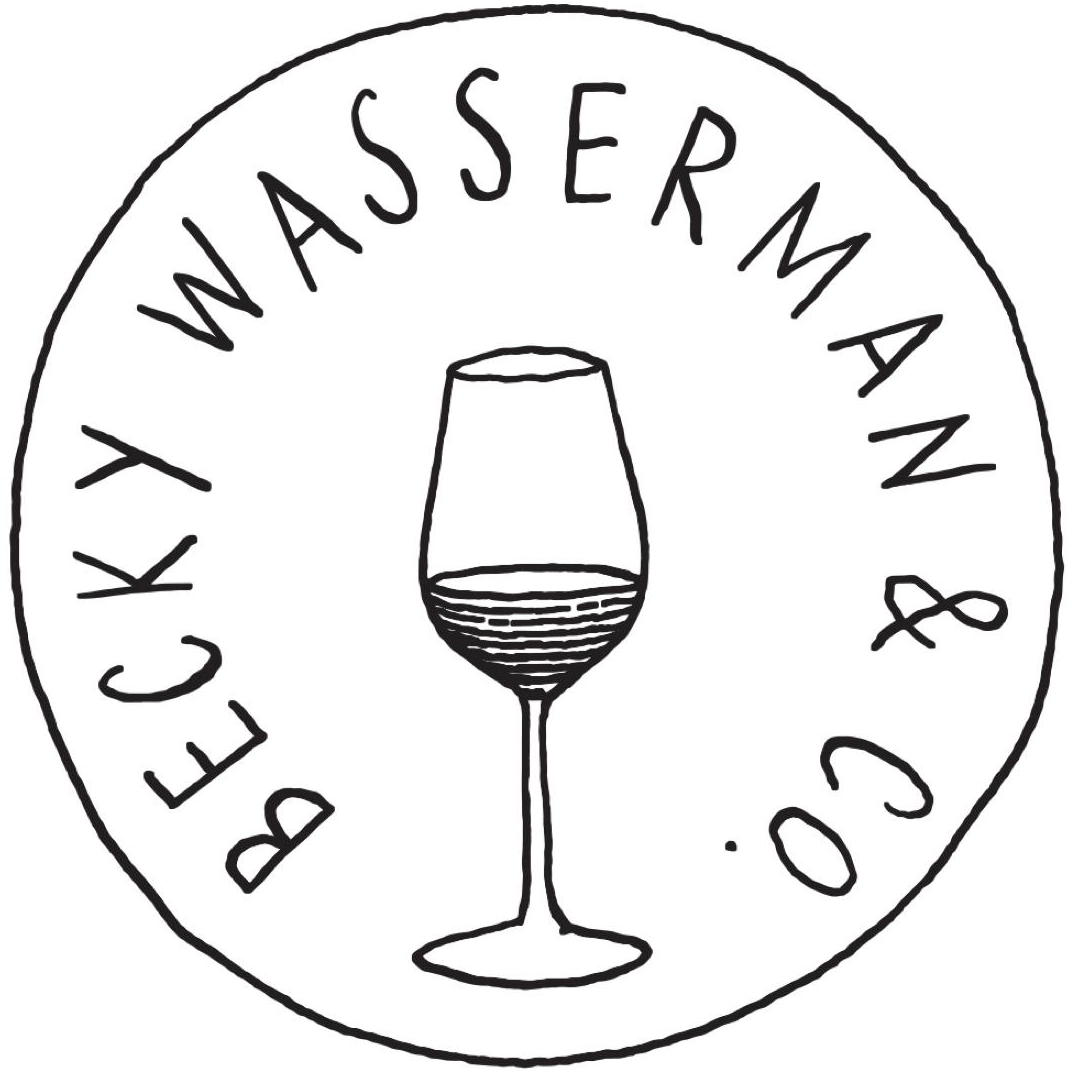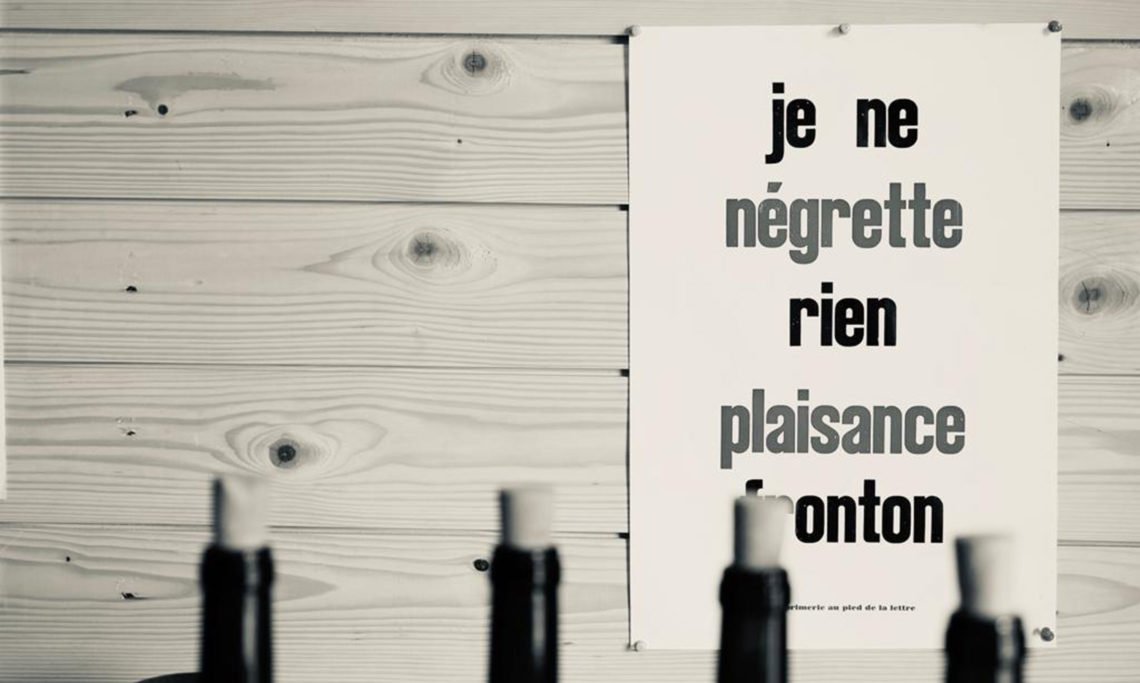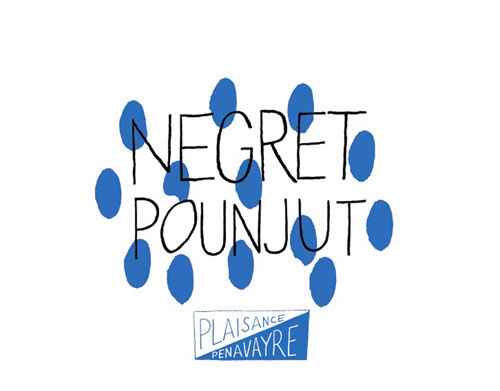Domaine Profile
- Location: Vacquiers, AOP Fronton, Vignobles du Sud-Ouest, France
- Name: Plaisance because the vineyards Marc started with were for the most part located in the lieu-dit Plaisance.
- Created: In 1991 by Marc Penavayre.
- Size: 26.00 ha (64.25 ac)
- Varieties: Négrette, Négret Pounjut, Jurançon Noir, Abouriou, Alicante, Syrah, Cabernet Franc, Gamay Fréaux, Gamay, Semillon, Bouysselet, Chenin Blanc, Muscat, Sauvignon Blanc.
- Viticulture: Organic (AB, 2011), biodynamic practices, cover crops, minimized copper with the use of plants and essential oils.
- Vinification: De-stemmed, ambient yeast fermentation in cement or stainless steel tanks, aged for 12 to 24 months in cement tanks, steel tanks, used barrels, or foudres, some fining, no filtration, minimal added SO2.
Presentation of the Fronton AOP
- Creation Date: February 7, 1975 from the union of the Villaudric and Fronton VDQS.
- Types: Fronton rouge, Fronton rosé. There is no Fronton AOP for whites even though whites are produced in the area (labeled as Vin de France).
- Parent Region: Vignobles du Sud-Ouest.
- Area of Production: 2060 ha in 2008; 70 cooperative members; 40 independent growers.
- Plantation Density: minimum of 4000 vines per hectare.
- Maximum Yields: 50 to 60 hL/ha for the reds, 55 to 60 hL/ha for rosés.
- Minimum Alcohol Content: 11% for reds, 10.5% for rosés.
- Geography: Fronton is the closest appellation to the city of Toulouse (20 km) and is considered to be the city’s local wine. The appellation is located on the left bank of the Tarn River and encompasses 20 communes from the départments of Haute-Garonne and Tarn-et-Garonne.
- Elevation: 130 to 220 meters.
- Geology: The vineyards that have the right to the AOP are located on three alluvial terraces dating from the Quaternary (2.6 million years onwards).
January 28, 2019, Le Vin de Mes Amis, Montpellier
December 2019 —Paul W.
It is my second day at Millésime Bio in Montpellier, and already my fourth off. Offs are the side shows to the main wine fair, each with a more fanciful name than the next. Some have somewhat of a revolutionary name, but it doesn’t quite work. Wine is a first world problem and the enemy not very, very bad. The proliferation of offs makes it impossible to visit them all. This is frustrating because we have domaines in every one and I am bound to disappoint someone. Instagram does not help.
In the morning, I was at The Winemakers From the Unreal, a new off. I am now at The Wines of My Friends, an elder and well-respected off with a waiting list of domaines anxious to be friended. Ilias, a young Greek who is new to our team, has joined me. I told him he could, as long as he took care of the driving. Youth must pay its dues.
We begin to taste. After only two domaines, it is obvious that my palate has thrown in the towel. Ilias shows empathy, but I know he’s worried that I will have him drive me back to the hotel. There are so many important domaines here. He’s so passionate and thirsty for knowledge. It’s as if I brought him to Disneyland, we just got through the gates, and I’m already about to pull the plug. I reassure him. I’ll go hang out with my winemaker buddies while he tastes his heart’s fill.
The Danjou brothers have invited me to the post-tasting dinner. Despite my bruised palate, it’s polite to stay. Bottles fly in all directions, as they do in these dinners. I brought bottles too, of course, one of them specifically for Sylvain Pataille. For reasons I won’t go into, I ended up with a half-case of Domaine Roulot’s 1991 Aligoté. We don’t often taste older examples because no one ever thinks to lay them down. Sylvain will be amused. (He has become the undisputed World Champion of Aligoté). I go looking for him.
At his table, a tall man with a thick southern accent pours wine from a magnum. He looks at my bottle, hands out his glass. I hand out mine in return. He introduces himself, then his wine, “Marc Penavayre; Fronton; Négrette; a simple country wine.” There is a bedrock of genuine humility behind the defiance.
Oh my! His wine is not simple. It’s minimalist! My palate beats again.
The aromas are fresh-dark: violets, plums, zan. On the palate, the fruit is pretty. But the real kicker is the vegetal. Black has always been my least favorite color in red wine but oh, how I love it when it’s splattered with green. The tapenade of certain Syrahs… The brighter green of some Mondeuses… I find that so refreshing and vibrant. Marc’s Négrette is more delicate than those examples. It’s even small. So much so that domineering winemakers would have to turn it into something bigger while the eek!-tannin crowd would inevitably carbo-infuse it. Marc did neither. He kept it true and naked in all its glorious petiteness, and with a noticeable spine. It does take humility and defiance to ride this line. His simple Fronton will not be for everyone but I can’t help myself: I propose.
April 16, 2019, Vacquiers is the Easternmost Border of Fronton
“I am going to show you my best vineyard first,” Marc grins. A few minutes later, he pulls his car into a field. There are no vineyards in sight.
Marc walks to the center of the field. “When the INAO wrote the regulations for the Fronton AOP,” he explains, “they included only ‘terroirs that were modified by the river Tarn’—alluvial terroirs. Those are on the other side of the village. But historically, non-alluvial terroirs like this one were the best, the original ones. The bedrock is only 50 centimeters to 1 meter deep, and in some places it even crops out. It is a very hard limestone locally called Roucanel. On the alluvial side, you’ll find it at much greater depths —3 to 5 meters. In effect, when they created the AOC, they left out something much more…”
“Mineral!” I cut him off with unbridled enthusiasm but no manners.
“Exactly! Vacquiers is easternmost village of the appellation, the only one with this duality of terroirs. I have a few vineyards below you can’t see from here. This is our big project with my son Thibaut: the recolonization of the village’s original terroirs.”
I take in the field. The slope’s grade screams good vineyard and it faces south southeast. I look down. The clay is rocky, with plenty of colluvial, rather than alluvial, gravels. I notice that I am not standing in a field, per se, but on cover crops.
The INAO didn’t get it all wrong by any means. Négrette, the AOP’s enforced main variety is local. In fact, with few exceptions, the AOPs in France’s southwest are much more enlightened than they are in the southeast. Carignan, for example, is the Languedoc-Roussillon’s greatest variety. But that is not what the regulations say. According to them, it is a secondary variety, only allowed in limited proportions of a blend (less than 40 or 50%, depending on the AOP.) If winemakers want to bottle pure Carignan, they can. However, they must demote it from AOP to IGP. Put it this way: imagine “Purple Rain” if some governing body had the authority to tell Prince he could play in the rhythm section, but not take the guitar solo, let alone sing, unless he agreed to call his song “Mauve Rain.”
The southwest is an amazing trove of ancient, forgotten, autochthonous, local, or modest grape varieties. The French use these adjectives interchangeably to describe them, but "modest" may be the most official, since the annual meeting of an association of winemakers who focus on these varieties is called Les Rencontres des Cépages Modestes. Many winemakers from the southwest and the Savoie are members (Savoie is the other trove of forgotten varieties). But more unexpected regions are represented too. Pierre de Benoist, who runs Domaine De Villlaine for his uncle, is a member because Aligoté is considered a cépage modeste, as is Jean-Michel Deiss, because there are 47 unauthorized but historically correct grape varieties that he wants to have added to the authorized varieties in Alsace.
In Fronton, two varieties have recently been rediscovered.
Marc has grafted some vines over to Bouysselet, and is planting more. It is an extremely promising local white variety that was rediscovered by Château La Colombière only a few years ago on a small patch of pre-phylloxera vines. Its parents are Savagnin (Jura) and Plant de Cauzette (Béarn). If you want to taste it on its own, look for La Colombière’s Grand B. I've only had it once. It was corked, unfortunately. But the verticality was nonetheless impressive.
Then Marc found an ancient local variety called Négret Pounjut. Pounjut means pointy in the Occitan language. He shows me a picture. The berries are "pounjut" indeed. He is its only producer. The vines are still young but they already sing. This could be the most exciting forgotten red variety I have tasted to date. The fruit is reminiscent of Dolcetto, with a little of the tapenade of Syrah, and a very satisfying dry chalkiness on the finish. Marc sees a different variety, “The Poulsard of the South,” he says. The wine is only 10.8% alcohol! It’s fresh, fresh, fresh. Can I have some? No. There is none left. ☹
Marc also makes a pure Jurançon Noir called Rend Son Jus. The variety is not specific to Fronton but was widely planted throughout the southwest. “Fabien Jouves used to make one called ‘You Fuck My Wine’, he points out. But he blends it with Malbec and Merlot now. So I’m the only one bottling it on its own, I think.” The vines are 50 to 60 years old and head-trained (gobelet). Marc is replanting a fair amount from a massal selection of his old vines. It’s only 11% alcohol, brambly on the nose, crunchy, red fruit-driven and soft on the front palate, but with more serious structure than the Pounjut. Can I have some? Yes, but hurry. ☺
The above is not an exhaustive list of Marc’s local varieties. Others are peppered throughout his vineyards. “This above all: to thine own self be true,” wrote Shakespeare. The southwest is the place to be just that. We’ll have to wait to see some of the forgotten varieties in decent quantities and for the reclaimed original terroirs to produce their first wine, but the future of Château Plaisance is absolutely enthralling.
History
“Before phylloxera, there were 90,000 hectares of vineyards in the Haute-Garonne,” Marc says, “almost as many as there are in the Bordeaux area today. But phylloxera came, then mildew, then the frosts of 1956… and then, a plant! It was the sunflower that did the grape in. The farmers could earn as much growing sunflowers than they could growing grapes, and without the back-breaking work. The local wine cooperative saw their yearly production drop from 90,000 hectoliters to 17,000. It was the first wine cooperative in France to declare Chapter 11.”
Marc’s father Louis was born in 1935. “He made his living from polyculture; all the farmers here did,” says Marc. “He owned 7 hectares of vines and 6 hectares of peach trees. On one side of the village, it was all cereals and sunflowers, and on the other side, it was all vines and peach trees, plus a couple specialty crops like the Purple Garlic of Cadours and the Pink Garlic of Lautrec (Garlic likes calcareous clays). My father sold his grapes to the coop for a long time but left it to make his own wine.”
Marc was born in 1963. He studied viticulture and enology in Toulouse, graduating with a DNO (National Diploma of Enology). He went to work for France’s National Institute for Agricultural Research (INRA). Now, INRA may be responsible for many of the ill-doings of industrial agriculture in France, but some of its research is amazing and surprisingly benevolent.
Marc joined René Morlat’s team in the Loire. From 1985 to 1990, they studied the Anjou in great depth and produced a gloriously detailed geological, pedological, and climatological cartography of the region’s vineyards. “I dug so many holes in Saumur,” Marc says. “I saw all those kids grow up, Romain Guiberteau, Antoine Sanzay…”
Marc met his wife,Anne, in the Loire. Anne was an engineer too, working on horticultural substrates. They married in 1989. “I need to warn you,” he told her, “you are marrying a government scientist but you will end up with a peasant.” Sure enough, only a 1 ½ years later, the couple moved to Vacquiers.
“It was the era of grubbing-premiums,” says Marc, “when the government paid farmers 50,000 francs (€ 11,000) for each hectare of vines they uprooted permanently. Jeannot, a childhood friend of my father’s, told me ‘I have 4 hectares, nice vineyards, you know the ones. My children don’t want them. So either you come home or I’ll pull them out.’ And I tell him, ‘Jeannot, what shit are you trying stir up here? I just got married. A woman from the Peninsula of Crozon. An engineer. How am I to drag her down to the Midi-Toulousain?
“But I’m from the village. My four grandparents are all from the village. I talked to Anne. And she said, ‘Lets do it!’”
Since most of the vineyards Marc had acquired from Jeannot were in the lieu-dit Plaisance, the couple named their domaine Château Plaisance. Château was ironic. But there was nothing amusing about the vintages they were to face.
“On the 21st of April 1991, there was frost,” says Marc. “We lost nearly 100% of the crop. In 1992, it wasn’t that it merely rained in spring, rivers fell from the sky. Négrette, like Malbec and Grenache, is very sensitive to shatter. In some parcels, I harvested even less than in 1991. In 1993, I was happy. We had a beautiful crop, but then on September 4th, we had 105 mm of rain in one night. We went from perfection to a total catastrophe. Négrette has thin skin. The grapes swelled, burst, then rotted. If my father hadn’t put money on the table, I wouldn’t be here talking to you.”
Organic and Biodynamic Farming
Marc went organic and biodynamic in 2005. He was certified organic in 2011. “I don’t have biodynamic certification even though I dutifully follow the script,” Marc says. “If my son Thibaut wants certification, we’ll do it.”
Marc doesn’t just follow the script, though. We’re standing at 220 meters on top of the highest alluvial terrace of the appellation.
“This is my Négrette conservatory,” he says. “There are only four clones of Négrette available commercially. I didn’t want all the old selections to disappear, so I worked very hard at this. There’s even a selection from Davis in California and one from the Île de Ré. All the Négrette we plant now are massal selections from the conservatory. And we don’t pick and chose. We take everything. That way there’s biodiversity.
“We sow cover crops. We roll them, which creates a mulch. We unhill the vines, depending on the topography with a tractor or a horse. We weed everything by hand.
“We use very little copper and lots of plants. I have made my own infusions since 2005. Alder buckthorn and rhubarb are the most complementary and effective plants to treat against mildew. The University and centre for agricultural research in Changins, Switzerland, developed this method. Alder buckthorn is a fungicide, and rhubarb an elicitor. I stopped using nettles, or very little. I mostly use Alder buckthorn (bourdaine), rhubarb, and comfrey (consoude). And essential oils: palmarosa, Geraniaceae, citrus —bitter orange, mandarin orange, lemon. We use some as insecticides: lavender, lavandin, eucalyptus.
“It’s not like Lalou. She has 50 plants. I asked her ‘but what do you do with all of these, Mrs. Leroy?’ And she said, ‘Well you understand, in this vineyard I use this, in that one, this…’ And I said, ‘How can you possibly manage it?’”
“She doesn’t sell her wines at the same price as yours,” I tell him.
“The average price of my wines is low. Our yields are not high. In the rocks, here, you get 30 to 35 hL/ha. We try our best to combine intelligent agronomy with making a living.”
They do quite a bit more here, I’d say.
Wines
-
White
-
Rosé
-
Red


